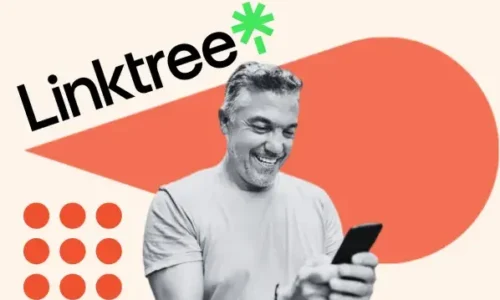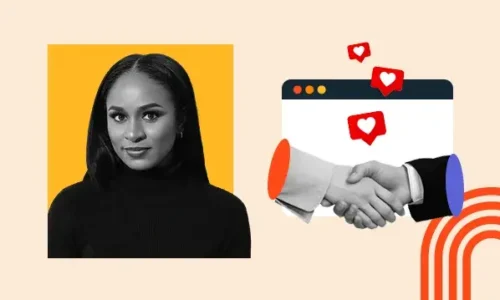What’s the Difference & Which Should Marketers Invest In?
- January 20, 2024
- Knowledge Base
- 0 Comments

When I started my content creation journey, one of my friends said over brunch, “Erica is officially in her influencer era.” I love it when my friends inflate my ego, so I let the comment slide and raised a glass to celebrate my first YouTube video.
However, the reality is that though I am a content creator, I’m not an influencer. While the terms influencer and content creator are often used interchangeably, they’re not always the same.
My friend didn’t need to know that, but marketers definitely should since both serve different purposes in the marketing world.
So, let’s dive into the differences between creators and influencers and which you should invest in.
When to Use Influencers in Your Marketing Strategy
When to Use Creators in Your Marketing Strategy
When to Use Both in Your Strategy
Influencers vs. Creators
Comparing influencers and creators is like comparing squares and rectangles. Not every creator is an influencer, but all influencers are creators. Let me explain.
Content creators are individuals who craft media to entertain or educate viewers. The term especially pertains to digital content, such as YouTube videos, TikToks, Reels, blogs, or social media posts.
Some content creators create it as a hobby, while others do it to earn income.
Modern Millie is a content creator who occasionally features products and services in her YouTube videos, but her content is always sponsored by the items she’s mentioning.
For example, Modern Millie’s video shows viewers how to use a service called STAN, but she mentions early on in the video that she is not being paid to promote the service.
She simply enjoys using it and thinks the information could be helpful to her followers.
Conversely, influencers are individuals who amass sizeable followings on social media and create content meant to promote or sell products and services.
Influencers typically have partnerships or deals with brands and use their online presence to advertise on the brand’s behalf.
For example, beauty and lifestyle influencer Jackie Aina is often sent PR packages from makeup and skincare companies to review the products on camera and influence viewers to purchase.
In the video below, she reviews products sent from Makeup by Mario. A link to purchase the products is in the video, and it’s possible she may receive a commission for each purchase.
So, how are all influencers creators, but not all creators are influencers? Well, every influencer must create and distribute content to advertise a product, service, or brand.
However, not every creator crafts content to promote a brand or generate income.
For example, I’m a YouTuber who creates content about things I enjoy (movies, anime, manga, etc). Still, I do not work with any brands, nor do I have any professional obligation to promote anything on my channel.
Thus, every influencer is a content creator, but not every content creator is an influencer.
When to Use Influencers in Your Marketing Strategy
I think most brands could benefit from influencer marketing. There is no right time, especially considering that 69% of consumers trust influencers more than they trust information coming directly from a brand.
Moreover, 81% of consumers say social media posts from influencers, family, or friends drove their interest in an item in the past year.
However, if you‘re still on the fence about incorporating influencer marketing into your strategy, here’s a quick breakdown of when to know it’s time to give it a shot.
When You’re Trying to Tap into Gen Z
One thing you need to know about Gen Z is that they hate blatant advertising. A recent report found that 99% of Gen Z consumers will skip an advertisement if given the option, and 63% use blockers to online ads altogether.
So, how can you reach a generation that wants nothing to do with advertisements? The answer is to have an influencer reach them for you.
33% of Gen Z consumers have bought a product based on an influencer’s recommendation in just the past few months, and 72% of Gen Zers follow influencers on social media.
So, if you want to gear your marketing efforts toward Gen Z, influencers are your golden ticket.
When You Want a Low-Cost Way to Promote Your Product or Service
When you think of influencers, you might think of people like Jackie Aina or Bretman Rock, who have millions of followers. Influencers with more than 1 million followers are celebrity influencers or mega influencers.
And they are very pricey to work with.
Fortunately, influencer marketing is still accessible if you’re a marketer on a tight budget. Micro-influencers have 10,000 to 100,000 followers and are much more cost-effective to work with than their celebrity counterparts.
Even better, micro-influencers are known to have a higher ROI than influencers with larger followings, and they have higher engagement rates.
This is because the online communities they’ve built are smaller than other influencers so they can form a more intimate bond with their audience.
In 2023, 64% of marketers who worked with influencers chose micro-influencers, making them the most popular type of influencer.
Furthermore, 44% say micro-influencers are less expensive to leverage and easier to establish long-lasting partnerships with. All of this is according to our latest 2024 State of Marketing Trends Report.
To Market on Hard-To-Reach Channels
Social media channels like TikTok can be challenging to tap into with influencers because consumers are flocking to these channels to interact with their favorite creators or join online communities.
So, consider partnering with an influencer to grab users’ attention on any of these platforms.
For example, Hershey collaborated with Twitch influencers Ninja and DrLupo to promote its Reece’s Pieces chocolate bar. The influencers, who each have over 1 million followers, would livestream themselves tasting the new product.
When to Use Creators in Your Marketing Strategy
All of the situations I mentioned above can also be good times to use creators in your strategy.
However, you‘ll also want to consider collaborating with creators or hiring them in-house, if you’re looking to find unique, authentic, and meaningful ways to connect with consumers.
For example, if you want to leverage blogging in your content marketing strategy, you should look into collaborating with a blogger or hiring one in-house.
Content creators also come in the form of graphic designers, videographers, filmmakers, and more — all of whom can make engaging digital content that can be shared across multiple platforms and generate buzz for your brand.
When to Use Both in Your Strategy
If you have the budget to leverage both content and influencer marketing, and you’re looking to execute a strong marketing campaign for an upcoming product or service — why not partner with both creators and influencers?
Now that you know the difference between the two and what both can bring to the table, you’re ready to find a creator or influencer who is aligned with your vision and who will help your brand reach new audiences. Raise a glass!
![Download Now: Free State of Marketing Report [Updated for 2024]](https://no-cache.hubspot.com/cta/default/53/b0f73a5e-16e4-41fd-9511-8564efc560a7.png)




